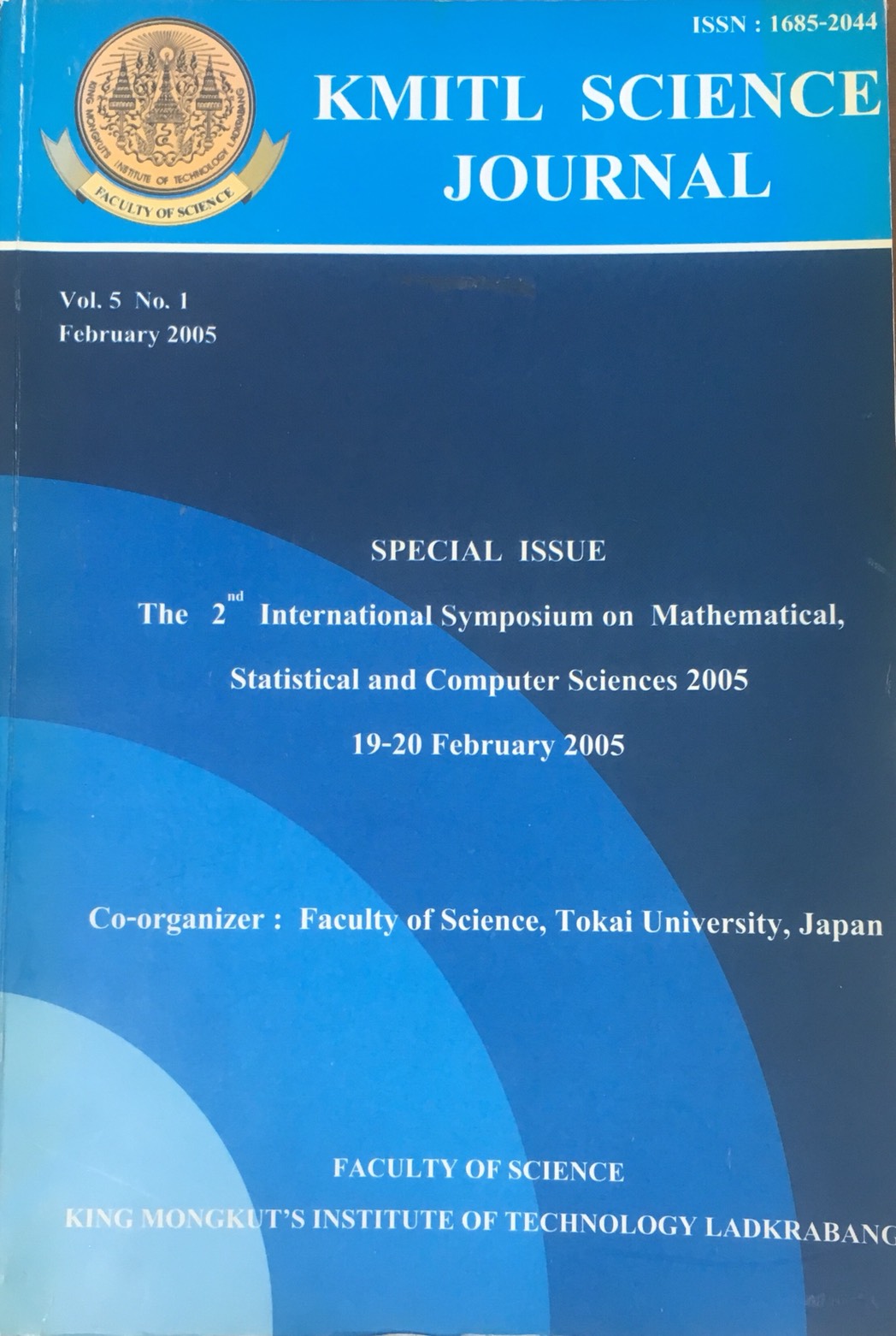Virtual Wave : an Algorithm for Visualization of Ocean Wave Forecast in the Gulf of Thailand
Main Article Content
Abstract
In this paper, a case study of sea wave generated by tropical cyclone in the Gulf of Thailand is carried out by using the cycle 4 version of the WAM (Wave Model) model. The model domain currently covers from latitudes 5N – 15N and longitudes 95E – 105E, and the model spatial resolution reaches 0.25 degree. Comparison among the model results, the platform demonstrate that the model can fairly reproduce the observed characteristics of waves and this paper presents a new method to simulate virtual ocean wave surface. One of the widely used methods for simulating ocean wave is making use of wind-wave spectrums. The ocean waves produced in this way can reflect the statistical characteristics of the real ocean well, they just look like superposition of significant wave height. In order to overcome this shortcoming of traditional method, the new method proposed in this paper take account of the effect of the 10meters wind field over ocean surface. The virtual ocean wave simulated by this way is not only accord with statistical characteristics, but also looks like real ocean wave, it can be widely used in VR (Virtual Reality) applications.
Keywords: WAM cycle 4, Significant wave height, Typhoon Linda 1997, Virtual Reality, Visualization, Virtual Wave
Corresponding author: E-mail: watt_kan@hotmail.com , Somporn.ChuaiAree@iwr.uni-heidelberg.de
Article Details
Copyright Transfer Statement
The copyright of this article is transferred to Current Applied Science and Technology journal with effect if and when the article is accepted for publication. The copyright transfer covers the exclusive right to reproduce and distribute the article, including reprints, translations, photographic reproductions, electronic form (offline, online) or any other reproductions of similar nature.
The author warrants that this contribution is original and that he/she has full power to make this grant. The author signs for and accepts responsibility for releasing this material on behalf of any and all co-authors.
Here is the link for download: Copyright transfer form.pdf
References
[2] Hasselmann, K., 1974. On the characterization of ocean waves due to white capping, Boundary-Layer Meteorology, 6(1), 107-127.
[3] Janssen, P.A.E.M., 1991. Quasi-Linear theory of wind wave generation applied to wave forecasting, J. Phys. Oceanogr., 21(1), 1631-1642.
[4] Komen, G. J., Hasselmann S. and Hasselmann K., 1984. On the existence of a fully developed windsea spectrum; J. Phys. Oceanogr., 14(1), 1271-1285.
[5] Komen, G. J., Cavaleri, L., Donelan, M., Hasselmann, K., Hasselmann, S. and Janssen, P.A.E.M., 1994. Dynamics and Modelling of Ocean Waves, Cambridge University Press.
[6] Miles, J. W., 1957. On the Generation of Surface Waves by Shear Flows, Journal of Fluid Mechanics, 3(1), 185-204.
[7] Phillips, O.M., 1957. On the generation of waves by turbulent wind. J., Fluid Mech, 2, 417-445.
[8] Phillips, O. M., 1958. The Equilibrum Range in the Spectrum of Wind-Generated Waves, Journal of Fluid Mechanics, 4(1), 426-434.
[9] Phillips, O. M., 1977. The Dynamics of the Upper Ocean, 2nd ed., Cambridge University Press.
[10] Wright, Jr R. S. and Sweet, M. 1996. OpenGL Superbible, Waite Group Press.
[11] Tolman, H. L. 1994. Wind-waves and moveable-bed bottom-friction. J. Phys. Oceanogr., 24(5), 994.
[12] WAMDI group : Hasselmann, S., Hasselmann, K., Bauer, E., Janssen, P.A.E.M., Komen, G.J., Bertotti, L., Lionello, P., Guillaume, A., Cardone, V.C., Greenwood, J.A., Reistad, M., Zambresky, L. and Ewing, J.A., 1988. The WAM Model, A third generation ocean wave prediction model, J. Phys. Oceanogr. 18(1), 1775-1810.


